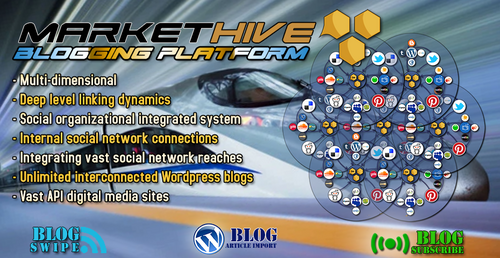
(1).png)
Image Source: Pixabay
Hey there, fellow bloggers! Today, we're diving into the exciting world of visual content and uncovering the dos and don'ts of using images in your blog articles. So, grab your favourite cup of coffee let's learn how to make your blog visually stunning!
When selecting images for your blog articles, always prioritize relevance and engagement. Your images should complement your content, help convey your message, and capture your readers' attention. Whether it's an eye-catching photo, an informative infographic, or an entertaining GIF, make sure it adds value to your article and enhances the reader's experience.
Say goodbye to those outdated, pixelated stock images! Avoid using low-quality or generic visuals that lack originality. They can make your blog appear unprofessional and fail to resonate with your audience. Instead, opt for high-quality images that are unique, authentic, and aligned with your brand's style and tone.
Website loading speed is crucial for a positive user experience. Therefore, it's essential to optimize your images for the web. Compress your images without compromising quality to reduce file size. You can use online tools or plugins to easily achieve this. Additionally, provide appropriate image dimensions to ensure they display properly across different devices and screen sizes.
While visuals are important, striking the right balance is key. Avoid overwhelming your readers with an excessive number of images that distract from your written content. Instead, aim for a harmonious blend of text and visuals. Remember, your images should enhance your message, not overpower it.
Accessibility matters! Make your blog inclusive by providing alternative text (alt text) and image descriptions for each image you use. Alt text serves as a textual description of the image, making it accessible to visually impaired readers using screen readers. Image descriptions, placed near the image, provide additional context and enhance the reader's understanding.
Respect copyright laws and give credit where credit is due! When using images created by others, ensure you have the appropriate rights or permissions. Stick to copyright-free or Creative Commons-licensed images and provide proper attribution when required. It not only avoids legal issues but also acknowledges the hard work of photographers and creators.
Experiment with image placement and formatting to find what works best for your blog's aesthetics and readability. Consider aligning images left, right, or centre, and use spacing to create visual breathing room around the images. Additionally, break up long blocks of text by strategically placing images to keep readers engaged and facilitate easier reading.
While high-resolution images look stunning, they can significantly impact your page load speed. Find a balance between image quality and file size. Compress your images without compromising too much on quality to maintain a seamless browsing experience for your readers. Remember, no one likes waiting for a page to load!

Image Source: Unsplash
In the world of blogging, we often hear the saying, "A picture speaks a thousand words." And it holds so much truth! This timeless phrase encapsulates the power and impact of visual content in conveying messages and telling stories.
Think about it. When you come across a striking image, it has the ability to instantly captivate your attention, evoke emotions, and spark your imagination. In a single glance, a picture can communicate complex ideas, elicit empathy, or transport you to a different time and place. It's like a window into a world of possibilities.
As bloggers, we have the incredible opportunity to leverage this power of visual storytelling. By carefully selecting and thoughtfully incorporating images into our articles, we can enhance our message, engage our readers, and make a lasting impression.
Imagine this: You're writing a blog post about the breathtaking sunset you witnessed during your recent vacation. You describe the vibrant hues of orange and pink painting the sky, the soft rays casting a warm glow on the landscape, and the serenity you felt in that moment. But, ah! A picture can bring that description to life and transport your readers right there beside you, experiencing that stunning sunset firsthand.

Image Source: Pixabay
Whether it's a product review, a personal anecdote, or a thought-provoking essay, images have the power to enhance and amplify your words. They provide visual cues, evoke emotions, and create a more immersive reading experience. Sometimes, a single image can convey the essence of your entire article more effectively than paragraphs of text ever could.
But remember, the key lies in choosing the right images—ones that align with your content, resonate with your audience, and add value to your message. A carefully selected image can evoke curiosity, trigger memories, or simply make your article more visually appealing.
So, as you embark on your blogging journey, embrace the saying, "A picture speaks a thousand words." Recognize the immense power that visual content holds and harness it to elevate your articles. Let your words dance alongside captivating images, creating a harmonious symphony that leaves a lasting impact on your readers. Because when it comes to storytelling, combining the art of words and the magic of visuals can genuinely make your blog articles unforgettable.
A picture truly speaks volumes. So, let your visuals do the talking and watch as your articles come alive with a thousand words, beautifully expressed through the lens of captivating imagery.
I hope these dos and don'ts help you master the art of incorporating images into your blog articles. Visuals make all the difference - they have the power to captivate, engage, and enhance your written content. So, let your creativity flow and create a visual feast for your readers!

Markethive's blogging platform offers members the ability to create engaging and visually appealing content for their affiliate campaigns by incorporating images, infographics, and videos. Here's how members can leverage these features:
Images: When creating a blog post on Markethive, members can easily add images to enhance their content. Simply, upload images from your computer. Markethive supports various image formats, allowing users to include relevant visuals that complement their written content. Images can be used to illustrate concepts, showcase products, or add visual interest to the blog post.
Infographics: Infographics are powerful visual tools that help convey complex information in a visually appealing and easily understandable format. Markethive allows members to incorporate infographics into their blog posts. Infographics can be used to present statistics, comparisons, or step-by-step processes related to their affiliate campaigns.
Videos: Videos are a highly engaging form of content that can effectively communicate messages to your audience. Markethive's blogging platform enables members to embed videos within their blog posts. Members can upload videos directly to the platform or embed videos from popular video hosting platforms like YouTube or Vimeo. Videos can be used to provide product demonstrations, share tutorials, or deliver compelling storytelling that supports their affiliate campaigns.
By incorporating images, infographics, and videos into blog posts, members can enhance the visual appeal of their content, make it more engaging, and effectively convey their affiliate campaign messages. This combination of visual elements helps capture the audience's attention, increase the time spent on the blog post, and potentially improve the conversion rates of their affiliate campaigns.
Check out the blogging platform - it's free to join.
Thanks for reading.
